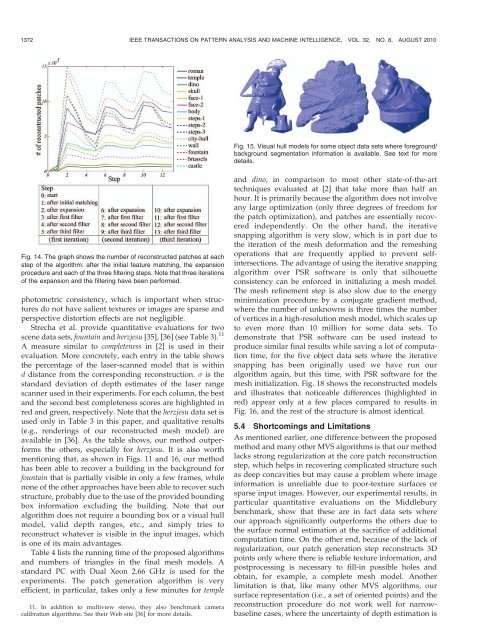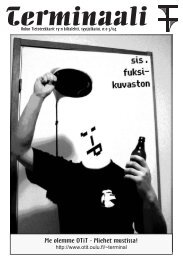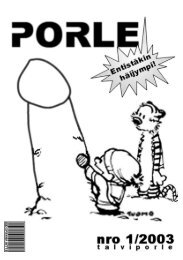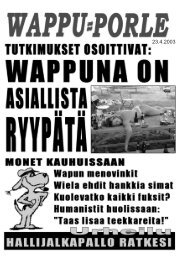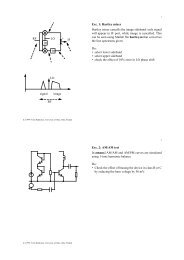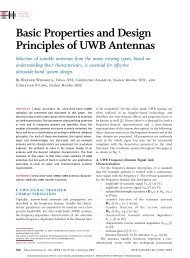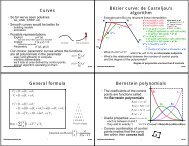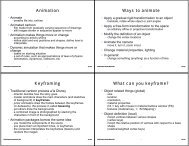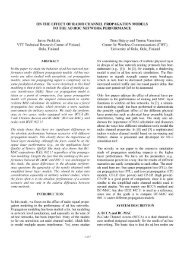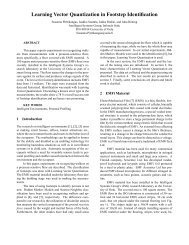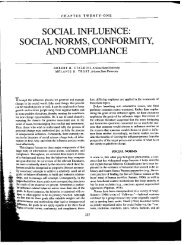Accurate, Dense, and Robust Multiview Stereopsis - Department of ...
Accurate, Dense, and Robust Multiview Stereopsis - Department of ...
Accurate, Dense, and Robust Multiview Stereopsis - Department of ...
You also want an ePaper? Increase the reach of your titles
YUMPU automatically turns print PDFs into web optimized ePapers that Google loves.
1372 IEEE TRANSACTIONS ON PATTERN ANALYSIS AND MACHINE INTELLIGENCE, VOL. 32, NO. 8, AUGUST 2010<br />
Fig. 14. The graph shows the number <strong>of</strong> reconstructed patches at each<br />
step <strong>of</strong> the algorithm: after the initial feature matching, the expansion<br />
procedure <strong>and</strong> each <strong>of</strong> the three filtering steps. Note that three iterations<br />
<strong>of</strong> the expansion <strong>and</strong> the filtering have been performed.<br />
photometric consistency, which is important when structures<br />
do not have salient textures or images are sparse <strong>and</strong><br />
perspective distortion effects are not negligible.<br />
Strecha et al. provide quantitative evaluations for two<br />
scene data sets, fountain <strong>and</strong> herzjesu [35], [36] (see Table 3). 11<br />
A measure similar to completeness in [2] is used in their<br />
evaluation. More concretely, each entry in the table shows<br />
the percentage <strong>of</strong> the laser-scanned model that is within<br />
d distance from the corresponding reconstruction. is the<br />
st<strong>and</strong>ard deviation <strong>of</strong> depth estimates <strong>of</strong> the laser range<br />
scanner used in their experiments. For each column, the best<br />
<strong>and</strong> the second best completeness scores are highlighted in<br />
red <strong>and</strong> green, respectively. Note that the herzjesu data set is<br />
used only in Table 3 in this paper, <strong>and</strong> qualitative results<br />
(e.g., renderings <strong>of</strong> our reconstructed mesh model) are<br />
available in [36]. As the table shows, our method outperforms<br />
the others, especially for herzjesu. It is also worth<br />
mentioning that, as shown in Figs. 11 <strong>and</strong> 16, our method<br />
has been able to recover a building in the background for<br />
fountain that is partially visible in only a few frames, while<br />
none <strong>of</strong> the other approaches have been able to recover such<br />
structure, probably due to the use <strong>of</strong> the provided bounding<br />
box information excluding the building. Note that our<br />
algorithm does not require a bounding box or a visual hull<br />
model, valid depth ranges, etc., <strong>and</strong> simply tries to<br />
reconstruct whatever is visible in the input images, which<br />
is one <strong>of</strong> its main advantages.<br />
Table 4 lists the running time <strong>of</strong> the proposed algorithms<br />
<strong>and</strong> numbers <strong>of</strong> triangles in the final mesh models. A<br />
st<strong>and</strong>ard PC with Dual Xeon 2.66 GHz is used for the<br />
experiments. The patch generation algorithm is very<br />
efficient, in particular, takes only a few minutes for temple<br />
11. In addition to multiview stereo, they also benchmark camera<br />
calibration algorithms. See their Web site [36] for more details.<br />
Fig. 15. Visual hull models for some object data sets where foreground/<br />
background segmentation information is available. See text for more<br />
details.<br />
<strong>and</strong> dino, in comparison to most other state-<strong>of</strong>-the-art<br />
techniques evaluated at [2] that take more than half an<br />
hour. It is primarily because the algorithm does not involve<br />
any large optimization (only three degrees <strong>of</strong> freedom for<br />
the patch optimization), <strong>and</strong> patches are essentially recovered<br />
independently. On the other h<strong>and</strong>, the iterative<br />
snapping algorithm is very slow, which is in part due to<br />
the iteration <strong>of</strong> the mesh deformation <strong>and</strong> the remeshing<br />
operations that are frequently applied to prevent selfintersections.<br />
The advantage <strong>of</strong> using the iterative snapping<br />
algorithm over PSR s<strong>of</strong>tware is only that silhouette<br />
consistency can be enforced in initializing a mesh model.<br />
The mesh refinement step is also slow due to the energy<br />
minimization procedure by a conjugate gradient method,<br />
where the number <strong>of</strong> unknowns is three times the number<br />
<strong>of</strong> vertices in a high-resolution mesh model, which scales up<br />
to even more than 10 million for some data sets. To<br />
demonstrate that PSR s<strong>of</strong>tware can be used instead to<br />
produce similar final results while saving a lot <strong>of</strong> computation<br />
time, for the five object data sets where the iterative<br />
snapping has been originally used we have run our<br />
algorithm again, but this time, with PSR s<strong>of</strong>tware for the<br />
mesh initialization. Fig. 18 shows the reconstructed models<br />
<strong>and</strong> illustrates that noticeable differences (highlighted in<br />
red) appear only at a few places compared to results in<br />
Fig. 16, <strong>and</strong> the rest <strong>of</strong> the structure is almost identical.<br />
5.4 Shortcomings <strong>and</strong> Limitations<br />
As mentioned earlier, one difference between the proposed<br />
method <strong>and</strong> many other MVS algorithms is that our method<br />
lacks strong regularization at the core patch reconstruction<br />
step, which helps in recovering complicated structure such<br />
as deep concavities but may cause a problem where image<br />
information is unreliable due to poor-texture surfaces or<br />
sparse input images. However, our experimental results, in<br />
particular quantitative evaluations on the Middlebury<br />
benchmark, show that these are in fact data sets where<br />
our approach significantly outperforms the others due to<br />
the surface normal estimation at the sacrifice <strong>of</strong> additional<br />
computation time. On the other end, because <strong>of</strong> the lack <strong>of</strong><br />
regularization, our patch generation step reconstructs 3D<br />
points only where there is reliable texture information, <strong>and</strong><br />
postprocessing is necessary to fill-in possible holes <strong>and</strong><br />
obtain, for example, a complete mesh model. Another<br />
limitation is that, like many other MVS algorithms, our<br />
surface representation (i.e., a set <strong>of</strong> oriented points) <strong>and</strong> the<br />
reconstruction procedure do not work well for narrowbaseline<br />
cases, where the uncertainty <strong>of</strong> depth estimation is


